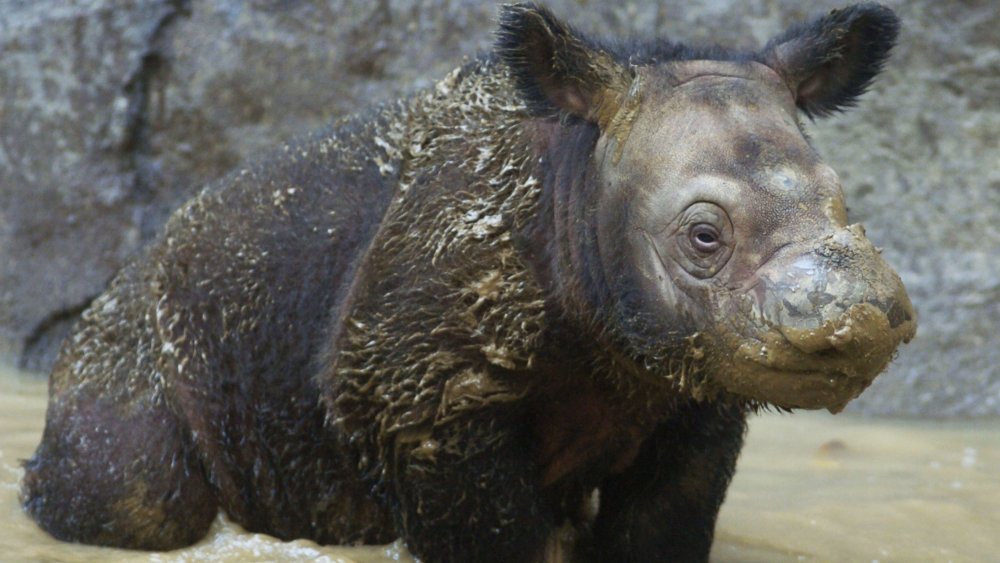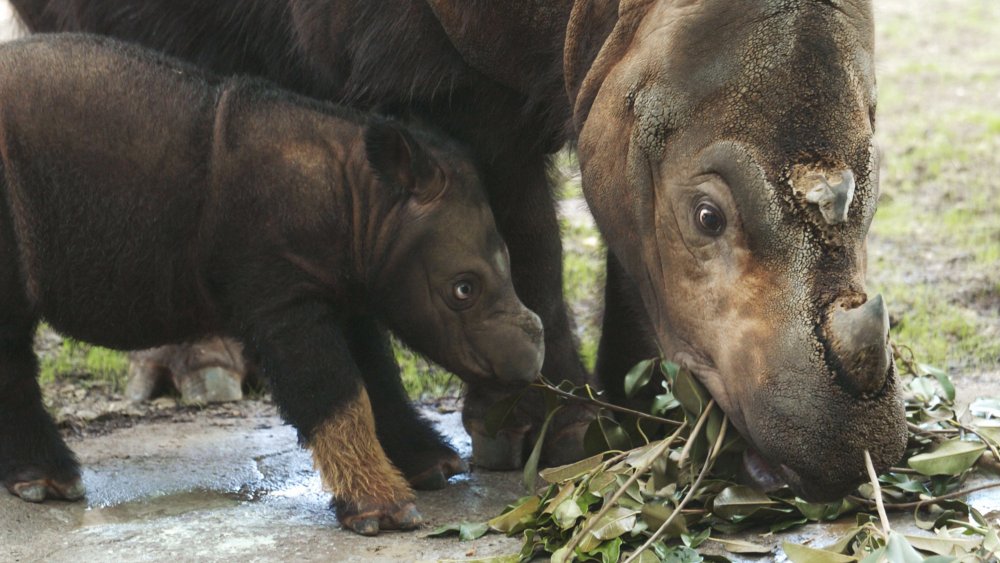The Sad Truth About The Woolly Rhino
The woolly rhino, an extinct species of rhino that is most closely related to the Sumatran rhino pictured above, cohabited tracts of land with prehistoric human beings for at least 12,000 years before going extinct 14,000 years ago. The reason why the species went extinct, however, has long remained a mystery, but one worth solving to better understand the mass extinction occurring today. As an article published in National Geographic just five years ago explains, there were two main theories: either the climate changes that drove sabertooths to extinction contributed to the woolly rhino's as well while "[the] second theory is that they were killed off by people", which knowing people is likely.
A recent study by researchers at Sweden's Centre for Palaeogenetics, which applies the study of genetics to prehistoric life, has concluded that the former theory is more likely. The heating itself wouldn't kill off the rhinos. Rather, the effects that the change in temperature induced in the climate, such as reducing the grasslands upon which the rhinos fed, led to their eventual demise. Of course, it still remains possible that hunting did also contribute somewhat as well. However, Professor Love Dalén, one of the publishers of the paper, summed up the importance of the discovery for The Guardian: "While perhaps we are let off the hook in terms of having killed them with spears back then, it highlights the risk that we are taking with biodiversity at present when we are affecting global climate on a rapid scale."
Cold case post mortem
Alex Fox goes into great detail about how the team managed to establish the primary cause for the woolly rhino's extinction for Smithsonian Magazine. Over the course of a few years, the team stumbled across 14 samples of woolly rhino DNA in the Siberian permafrost. Then, they sequenced the mitochondrial genomes of these samples to see if they grew more homogeneous as their time in the Ice Age drew to a close as well as their closest contemporary reference, the Sumatran rhino, to organize the picture. If the diversity of the samples decreased over time, that would show an increase in inbreeding.
However, the genome showed little signs of inbreeding, meaning that the decline of woolly rhinos occurred quickly over the course of 3500 years. As they had cohabited with humans for a longer period of time than that, it is safe to say the direct cause of their extinction was not overhunting. However, as Dalén cautions, it does not prove that hunter had nothing to do with their extinction either: "[Extinction happens] when a range of factors critical to a species' existence reach a tipping point." The new hope is to find yet more samples of woolly rhino DNA to develop a better understanding of what happened in the millennia just before their extinction. However, even if hunters didn't kill the woolly rhino, we should stay aware of the effects we have on the changes in our climate, which will devastate the species of today.

